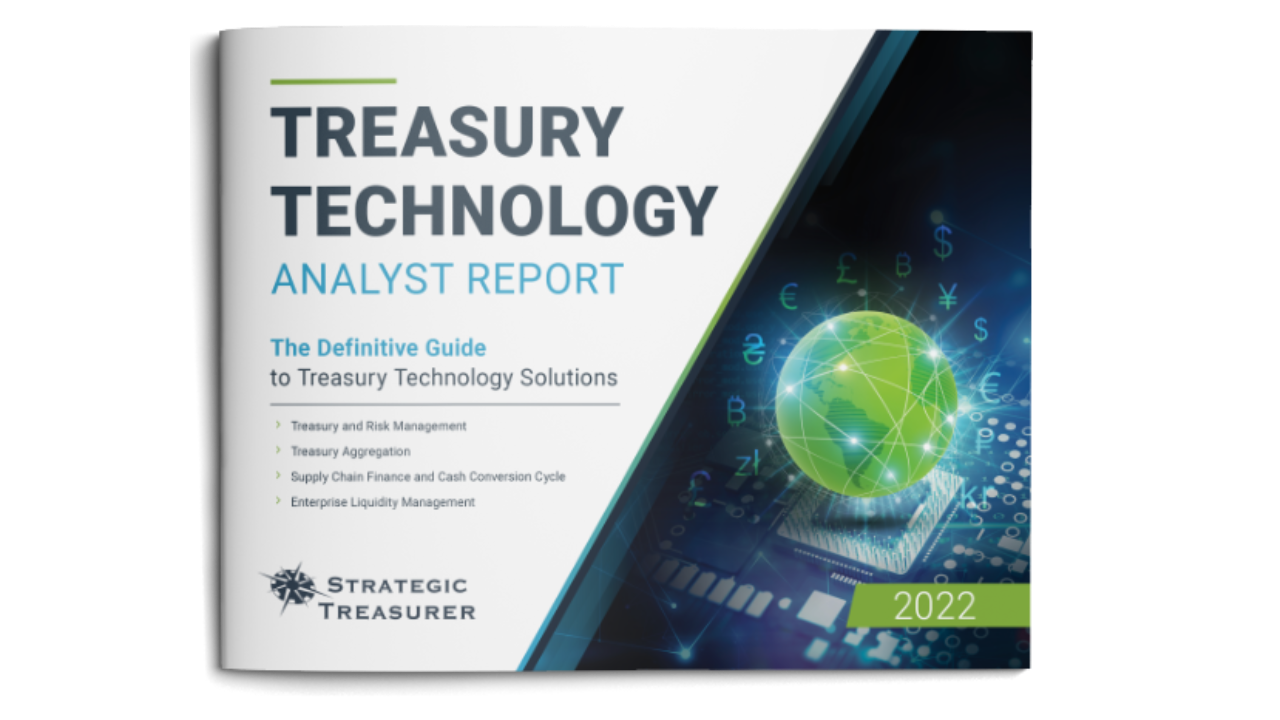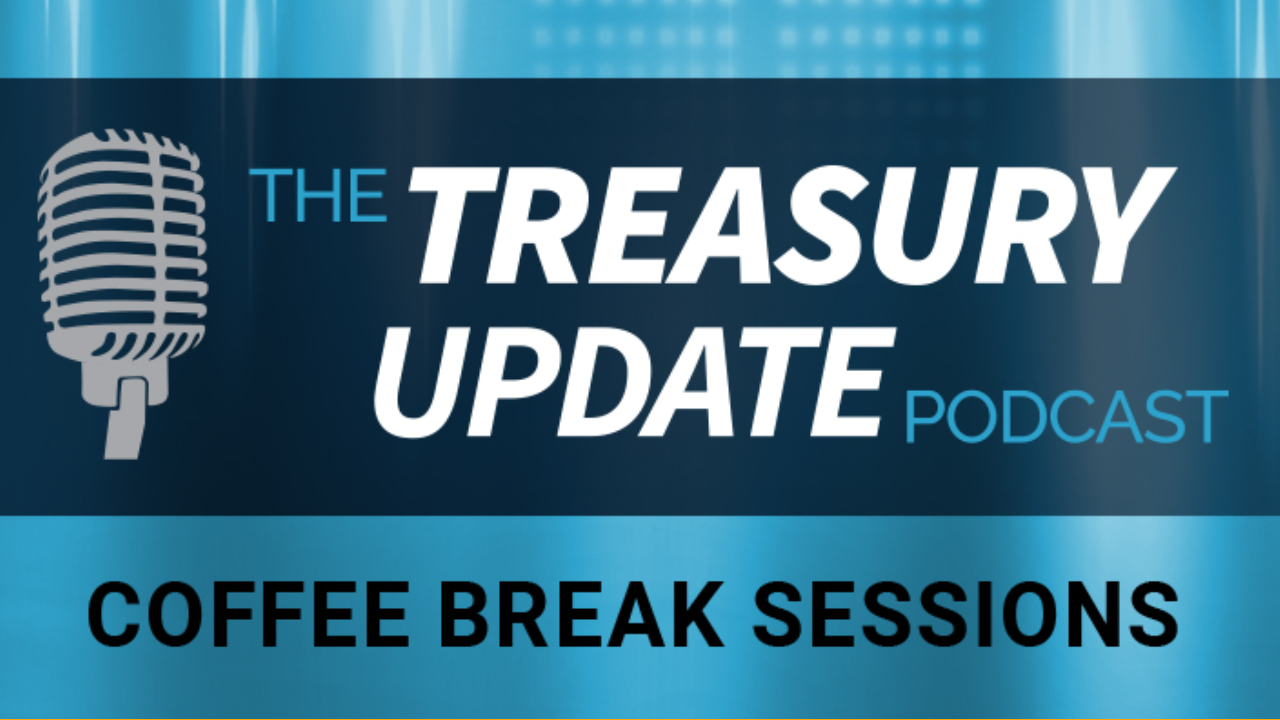
Session 88
Coffee Break Session: What API Types Exist?
APIs are becoming more and more common within the apps and programs you use in your day-to-day life. They sit behind the scenes and allow for visibility between platforms. In this podcast, Paul Galloway and Jason Campbell discuss the benefits of APIs, what they are, and what else you should know about how they relate to treasury.
Host:
Jason Campbell, Strategic Treasurer


Speaker:
Paul Galloway, Strategic Treasurer


Episode Transcription - (Coffee Break Session Series) - Episode 88 - What API Types Exist?
Jason Campbell 00:03
Welcome to the Treasury Update Podcast Coffee Break Sessions presented by Strategic Treasurer covering foundational topics and core treasury issues in about the same amount of time it takes you to drink your cup of coffee. I’ll be your host Jason Campbell, business development leader at Strategic Treasurer. Welcome back to another episode of the coffee break sessions. I’ll be your host Jason Campbell, business development leader here at Strategic Treasurer. Joining me today is Paul Galloway, Senior Advisor at Strategic Treasurer. Paul, once again, welcome to the show.
Paul Galloway 00:34
Thanks, appreciate you having me on here again.
Jason Campbell 00:38
I always love talking to you, you always bring some great points, I think our listeners probably appreciate all the words of wisdom even given them, especially with these past three episodes that we’ve done in regards to payments so far. And so continuing forward with the payment theme here, we’re going to kick it over into talking a little bit more API and API types more particularly, and I know this is when we think about API application programming interface. We hear API, we’re hearing it probably the acronym more and more often as we think about technology advances and how it’s utilized in the treasury world. And so you know, looking forward to having some insight for you to provide our listeners around this particular topic. So let’s kick it and get right into into the subject here. What are API’s? And how do they work?
Paul Galloway 01:29
API stands for Application Programming Interface. It includes a set of definitions and protocols that may be used to integrate application software. You can think of it in terms of interoperability, what that means is that it’s a way for systems and applications to connect and communicate.
Jason Campbell 01:52
So as we think about you know, communication and we say communication is key, right two way open dialogue, having, you know, again, ease, access points, things have had it had to your day to day more effectively, more efficiently. What API’s are out there in the universe?
Paul Galloway 02:08
Yeah, so there’s a variety of them hidden. There are four common types of web based API’s, public partner internal composite, are the common ones. A public is available and used by an outside developer or business, and sometimes is referred to as open or external API. Partner is available to specific developers and businesses, and typically fosters business to business relationships, or b2b. There are agreements and licenses that are in place that outline each party’s rights to use API. The next one is internal. It’s available only to those within an organization and are sometimes referred to as private API’s. These API’s typically connect internal admin systems as an example. The next one is composite. This connects two or more API’s to increase the efficiency of operations where they are related or depend on each other. So you may have API’s that stand alone, they provide a function, and they are actually they become more efficient if they are related and dependent on each other to put them together.
Jason Campbell 03:31
What are the common API protocols?
Paul Galloway 03:34
So the common API protocols out there are rest, RPC and soap. And so rest is the representational state transfer or rest allows systems to share information securely. No information is stored. It can aid in development and implementation and is typically pretty scalable. RPC is a remote procedure call. It’s a basic API, and is one of the first forms of API ever designed, is RPC. And it allows for remote computers within the shared ecosystem, to share data and information. And the last one soap is Simple Object Access Protocol. And it typically relies on, like, XML to support a range of communication protocols, and has a clearly defined network or framework I should say.
Jason Campbell 04:42
So now that we talked about what types of API’s are out there and the common protocols here, what else should people know about API’s and more importantly, how does it relate to treasury?
Paul Galloway 04:53
So we’ll do is talk about how it’s being used. Talk about relationship to banks. Talk about how it’s being utilized amongst fintechs. So I think API’s are definitely relevant to treasury. They are reliable. They help complete tasks as expected. It’s secure, it’s efficient, and can work with a variety of systems. Treasury, just ignoring banks and fintechs, can utilize API’s internally to connect their admin systems, ERP, other frameworks within the organization to talk to each other and share information and data. So this is really, you know, from an internal standpoint is really important to treasury, given that visibility to cash, understanding where everything is at, validating that all transactions have cleared and are true, reconciliation, that process the ability to forecast projections, whether in combination with an annual budget, or an FP&A team. API’s can be utilized to help facilitate that. So when we think about banks, there isn’t a treasury team out there that doesn’t have relationship with at least a single bank. It’s typically multiple banks. And so what we’re seeing today is all the tier one banks have complete sets of API’s, a stable of API’s, they continue to add to them and develop them. And some of the super regional, regional banks are also developing API’s today. It’s starting to trickle down to smaller banks as well. It takes time for this stuff to be adopted and integrated. It does take effort as well in terms of cost and capabilities of a bank to be able to provide those, but what they do for the banks themselves is allows the banks connect to systems. We can talk about what we talked about before connecting to admin systems, or ERPs within an organization. Banks can connect to these platforms with the use of API’s, they can help make things more efficient, having banks and a stable of API’s, and the adoption of these API’s is becoming more and more common. When we think about treasury platforms or treasuries, that are redeveloping their processes, procedures and systems, meaning they’re updating or upgrading, fintechs come to mind. So your treasury management systems, your treasury risk management systems, treasury aggregators, all these tools to help treasury and accounting manage cash, whether it’s AP or AR reconciliation platforms, the fintechs can provide platforms for providing connecting to all these different platforms, through development of API’s, we’re starting to see that become more and more common with treasury management system providers, they develop API’s to make these connections. And so from a treasury standpoint, becoming more efficient is important to them because there’s demand on treasures today to be more than just the, you know, have the ownership of all the cash and everything associated with cash. They have to be able to report, inform, provide strategic thinking, they have to do forecasts, they have to ensure that all the systems and processes are covered in terms of risks, so you’re mitigating risks associated with the activity that they’re engaged in, whether it’s processes, dual control, or it’s systems that provide the security, the pathways, the platforms, the shields, the firewalls, all these things that protect the corporate’s treasurer, and by default, treasury is a protector of a company’s or organization’s treasurer. And that means all the cash in everything that cash is invested in. So that’s their job that’s their duty. API’s help them do that more efficiently and in a secure manner.
Jason Campbell 09:29
You relating it and how it impacts treasury was spot on. So thank you that I’m sure the listeners again, probably took some real good key nuggets away from that. So thank you for joining me today, Paul. I really appreciate it. And thank you to our listeners for tuning in to another great episode of the Coffee Break Session. If you have any questions, comments or feedback you’d like to provide us, please drop us a note at podcast@strategictreasurer.com And until next time, take care.
Announcer 10:00
This podcast is provided for informational purposes only and statements made by Strategic Treasurer LLC on this podcast are not intended as legal, business, consulting, or tax advice for more information visit and bookmark StrategicTreasurer.com.
Access Your Definitive Guide to Treasury Technology.
Researching new treasury and finance technology can be overwhelming. Strategic Treasurer has stepped in to help. Explore our definitive guide to the treasury technology landscape and discover detailed, data-based coverage of:
- Treasury & Risk Management Systems
- Treasury Aggregators
- Supply Chain Finance & Cash Conversion Cycle
- Enterprise Liquidity Management
Learn more about these technologies and evaluate some of the top vendors in each industry.




